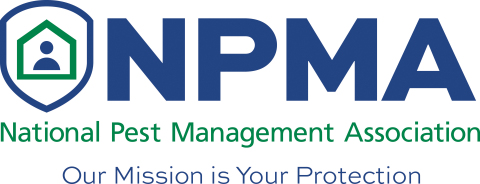Experts Warn of Invasive Pests Increasing Their Footprint Across the U.S.
Experts Warn of Invasive Pests Increasing Their Footprint Across the U.S.
The National Pest Management Association educates homeowners on invasive pest threats they may encounter as pest populations continue to flourish
FAIRFAX, Va.--(BUSINESS WIRE)--Invasive species are causing serious concern as continued erratic weather conditions are allowing certain pests to increase their territory across the U.S. To help protect food, property and health in the areas these pests invade, the National Pest Management Association (NPMA) is arming residents by sharing key information and prevention tips for five invasive pests causing trouble across the country.
@PestWorld educates is educating Americans by sharing key information and prevention tips for five invasive pests causing trouble across the country.
Share
“Without natural predators in their environment, invasive pest populations can easily get out of hand,” said Dr. Jim Fredericks, Senior Vice President of Public Affairs at NPMA. “If you suspect an invasive pest infestation in or around your home immediately contact a pest control professional. A trained professional can identify the species, make control recommendations and contact that appropriate authority if necessary.”
Invasive pests are not only a nuisance, but some are also capable of damaging property and transmitting dangerous disease. According to a new survey from NPMA conducted online by The Harris Poll, nearly 1 in 5 (18%) Americans have found invasive pests in their home and 17% are concerned about the threats posed by invasive species.*
Brown Marmorated Stink Bugs: First arriving in the U.S. in 1996, brown marmorated stink bugs are now found in 44 states and are known for the pungent odor they release when crushed. Unlike native stink bugs, this one seeks refuge inside buildings to survive cold winter weather, often in extremely large numbers. To keep this bug out of your home, patch holes in door and window screens and vacuum up any bugs found inside the house.
Asian Tiger Mosquito: The Asian tiger mosquito entered the U.S. in the mid-1980’s in shipments of used tires and has since spread to more than 25 states. Asian tiger mosquitoes prefer to breed in containers which are often found around human dwellings. This aggressive, daytime-biting insect can transmit harmful diseases like Eastern Equine Encephalitis (EEE), West Nile virus, Chikungunya, dengue fever and Zika virus.
Formosan Termites: Referred to as “super termites,” Formosan termites are the most destructive and aggressive of the over 2,000 species known to science. These invasive and hungry pests are found throughout the southern U.S. so residents living in this area are encouraged to schedule an annual termite inspection to protect their homes.
Spotted Lanternflies: Spotted lanternflies are a significant threat to agriculture throughout the areas they invade as they feed on the sap within many trees and plants. In infested areas, large populations of this pest can sometimes aggregate on buildings or shrubs. People are encouraged to help stop the spread of spotted lanternflies by squishing the bugs, checking cars and any outdoor equipment, like grills, firewood and lawnmowers, for egg masses and removing them before traveling.
Asian Longhorned Ticks: Asian longhorned ticks, which have been found in aggregations of thousands of individuals, were first spotted in the U.S. in 2017 and have since been found in 16 states. With warmer than normal temperatures allowing tick populations to remain active into the fall, it’s important to perform thorough tick checks after spending time outdoors.
To learn more about invasive pests and the threats they pose, visit PestWorld.org.
About the National Pest Management Association
The NPMA, a non-profit organization with more than 5,500 members, was established in 1933 to support the pest management industry's commitment to the protection of public health, food and property from the diseases and dangers of pests. For more information, visit PestWorld.org or follow @PestWorld on Facebook, Twitter, Pinterest, TikTok and YouTube and @PestWorldOfficial on Instagram.
Contacts
Brianna Greco
Vault Communications, Inc.
bgreco@vaultcommunications.com
(610) 329-0442
